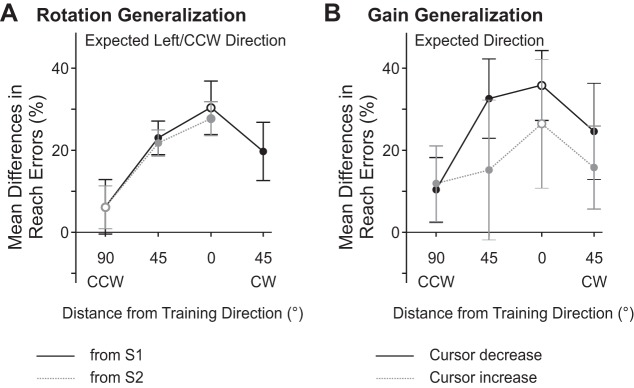Fig. 3.

Aftereffects after reach training with misaligned visual feedback of the hand in which feedback of the hand was rotated (A) or a cursor gain was introduced (B). A positive value indicates that subjects adapted their reaches in the expected direction. In A, angular reach end-point errors in the no-cursor reach trials are shown after training with a rotated cursor relative to reach errors achieved after reaching with an aligned cursor as % of the distortion introduced. Errors are shown for each no-cursor reach target relative to the trained target direction (0° distance) from both S1 (solid black line) and S2 (dashed gray line). Open symbols represent errors made at the reach training target from S1 (open black circle) or S2 (open gray circle). In B, distance errors in the no-cursor reach trials are shown after training with a cursor gain. Errors are shown for each no-cursor reach target relative to the trained target direction (0° distance) after training with a Cursor Decrease (solid black line) and after training with a Cursor Increase (dashed gray line) as % of the distortion introduced. Open symbols represent errors made at the reach training target. Error bars reflect SE.
